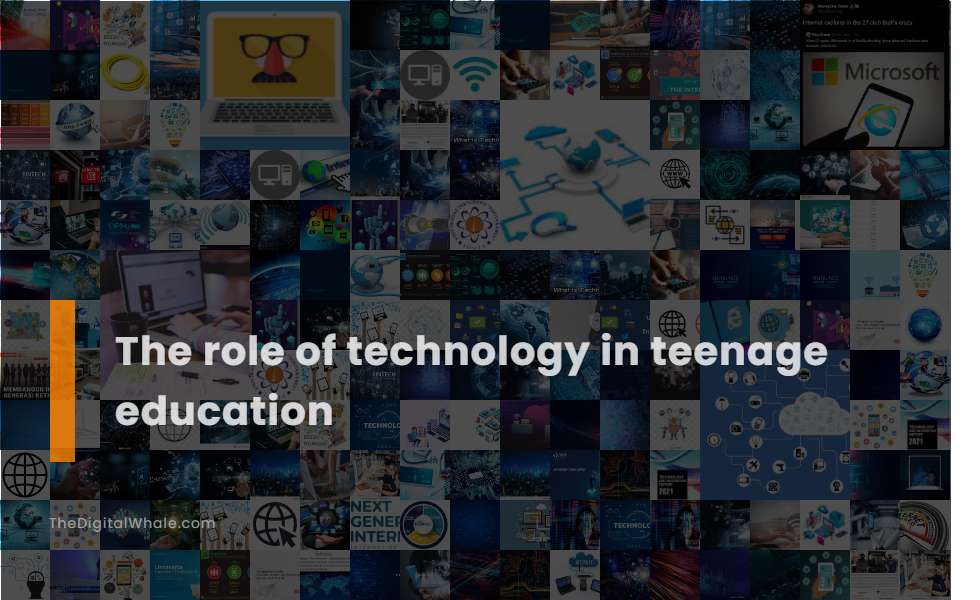The Role of Technology In Teenage Education
What is the increasing importance of technology in education? What is your definition of technology in education? Let's find out more about The Role of Technology In Teenage Education.

Technology as a Learning Tool: Access to hundreds of websites and apps for learning new hobbies and skills.
Technology serves as a powerful learning tool for teens, allowing them to access hundreds of websites and apps to learn new hobbies and skills, such as playing the guitar, painting, or even coding and web development. Utilizing platforms like Troomi, teenagers can effectively broaden their horizons and develop new competencies. This online access fosters an environment for self-directed learning, enabling young individuals to pursue passions at their own pace, ultimately enriching their educational journey.
Technology as an Educational Tool: Educational apps and websites for tutoring in various subjects.
Technology plays a crucial role in teenage education through various educational apps and websites, such as Khan Academy, Duolingo, Quizlet, and Photomath, which offer personalized learning paths, interactive language learning, memorization tools, and step-by-step math solutions, among other resources. Similarly, free tutoring apps for teens provide one-on-one help in subjects like math and science, as well as preparation for tests like the SAT or ACT, offering flexibility, accessibility, and often at no cost, helping teens manage their schoolwork and educational endeavors effectively.
Technology for Creativity: Tools for developing art skills, photography, music videos, and virtual worlds.
Technology plays a significant role in fostering creativity among teenagers by providing tools for digital art, 3D modeling, animation, music, and storytelling. Platforms like Adobe Photoshop, Blender, and online learning resources enable teens to express themselves creatively, experiment with various techniques, and bring their visions to life in virtual worlds.
Technology and Problem Solving: Developing troubleshooting and problem-solving skills through tech issues.
Learning technology helps teens develop critical problem-solving skills through activities like debugging code and designing user-friendly interfaces, fostering a logical and systematic mindset to tackle challenges in both personal and professional life. Additionally, troubleshooting tech issues teaches teens to approach problems proactively and effectively, enhancing their resilience and adaptability. For more insights on the myriad benefits, delve into the long-lasting advantages of tech education at Teens Learning Tech, where these competencies are explored in greater detail.
Technology for Connections: Staying connected with friends, family, and making new connections.
Technology plays a crucial role in Teenage Education by facilitating connections, with over 57% of teens making new friends online. Primarily through social media and online gaming, they utilize these platforms to stay in touch and deepen their friendships. According to a study by Pew Research Center, the digital environment significantly enhances how young people interact and maintain relationships, highlighting the pivotal impact of technology in nurturing teen friendships.
Related:
What are the disadvantages of online education for kids and teenagers? What are the advantages to using an online learning program instead of traditional classes? Let's find out more about The Advantages and Disadvantages of Online Learning for Teenagers.
Digital Citizenship: Teaching responsible use of mobile devices and online media.
Teaching Digital Citizenship in teenage education involves educating students on the responsible use of technology, including internet safety, privacy and digital security, cyberbullying prevention, and media literacy. This education aims to ensure their safety, promote respect in digital interactions, and teach responsibility in managing personal information and media consumption. To learn more about this essential topic, visit the Importance of Digital Citizenship page where you will find comprehensive insights and strategies for effectively integrating these principles into educational settings.
Engaged Learning: Using interactive tools like Kahoot!, Quizlet, and Pear Deck for engaging education.
Technology plays a crucial role in engaging teenage education through interactive tools like Kahoot!, Quizlet, and Pear Deck, which create dynamic quizzes, games, and student-centered lessons that enhance student engagement and cater to diverse learning styles. These tools, featured on the Future Fund website, showcase how innovative platforms can transform the educational experience, making learning more enjoyable and effective for students.
Access to Information: Quick and easy access to up-to-date information through mobile technology.
Technology plays a crucial role in Teenage Education by providing quick and easy access to up-to-date information through mobile devices. This allows teens to effortlessly access educational resources, watch informative videos, and utilize social media platforms for learning and maintaining connections with peers and educational content. The impact of technology has become even more significant in light of recent events, as discussed in detail on [Teen Technology Use and How COVID Has Changed It](https://extension.umn.edu/family-news/teen-technology-use-and-how-covid-has-changed-it), highlighting its transformative effect on education and social interaction.
Personalized Learning: Tailoring education to individual learning paces and styles through digital tools.
Technology plays a pivotal role in Personalized Learning for teenagers by providing digital tools that enable individualized instruction, enhance accessibility, promote interactivity and engagement, and allow students to learn at their own pace and in their own way. Using resources such as adaptive learning platforms, interactive activities, and data analytics, education is tailored to each student's unique needs and interests. To learn more about how these tools revolutionize education, visit Teachflow for further insights.
Enhanced Learning Experience: Integrating technologies like VR to enhance traditional classroom instruction.
Technology, particularly Virtual Reality (VR), enhances the learning experience for teenagers by providing immersive and memorable experiences that traditional methods cannot. VR allows students to explore real-world locations, interact with each other, and engage in unique learning activities that foster active participation and long-term retention of information. For more details on how VR is revolutionizing learning, visit Immersion VR's VR for Education page to see the extensive benefits it brings to educational environments.
Related:
What is a website that allows students to bring creative writing into the 21st century? Can I use virtual reality to take my students on virtual field trips? Let's find out more about Technology-Based Extracurricular Activities for Teenagers.
